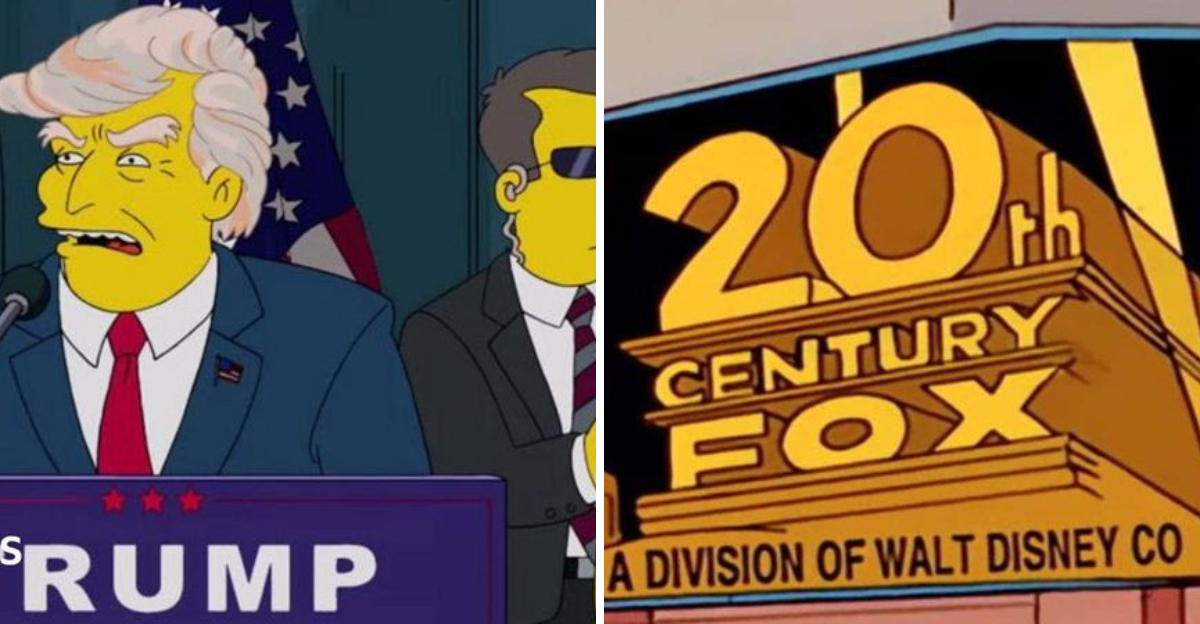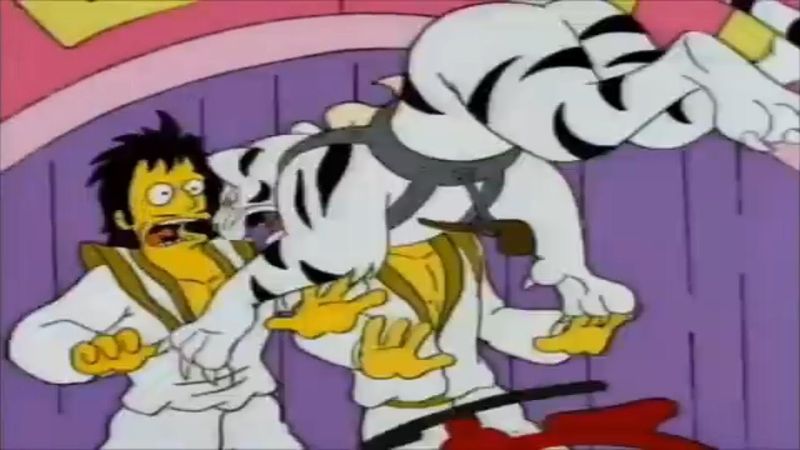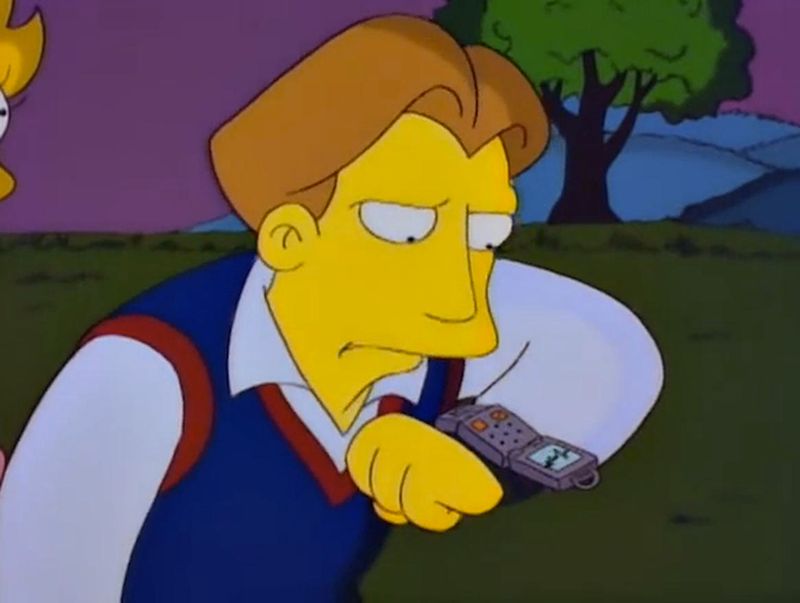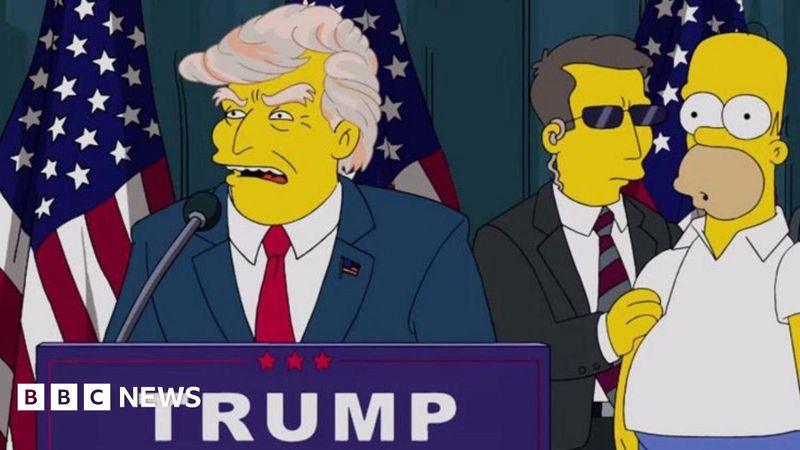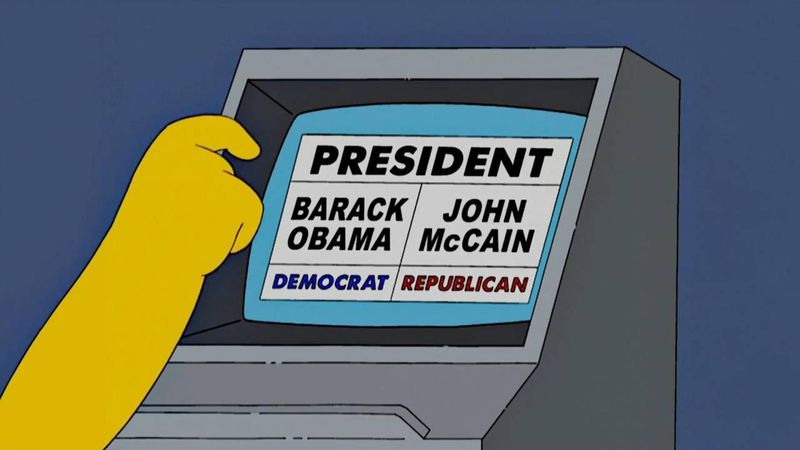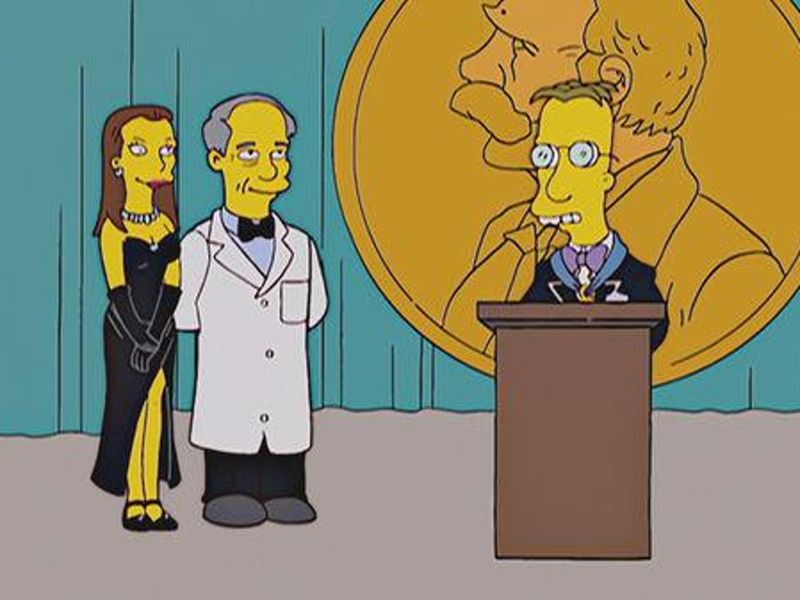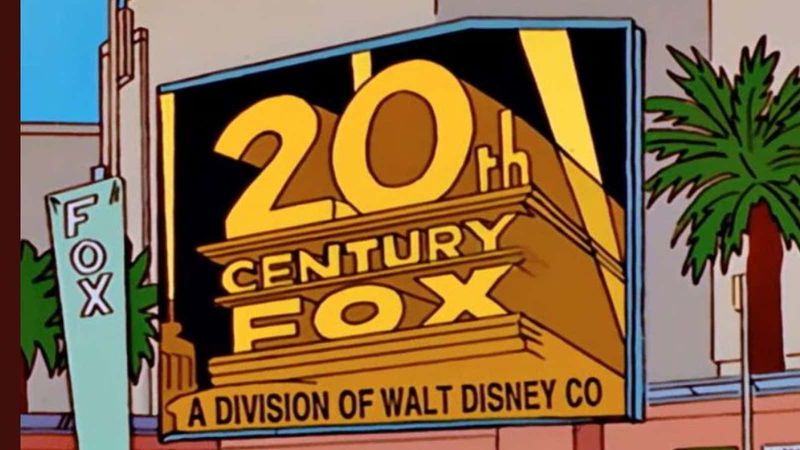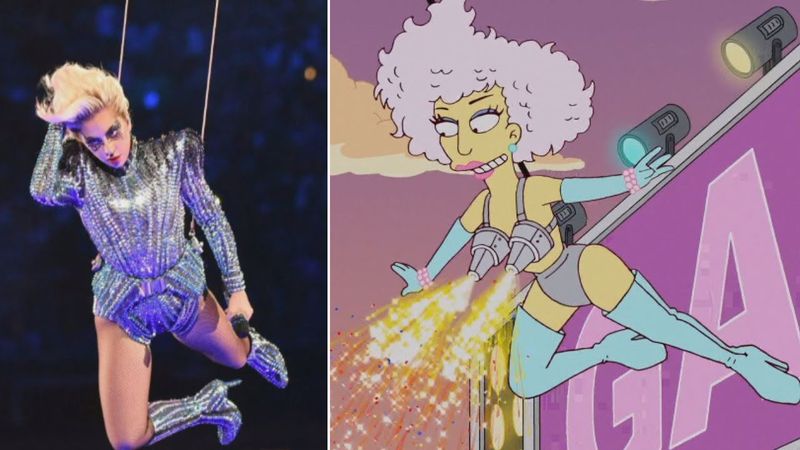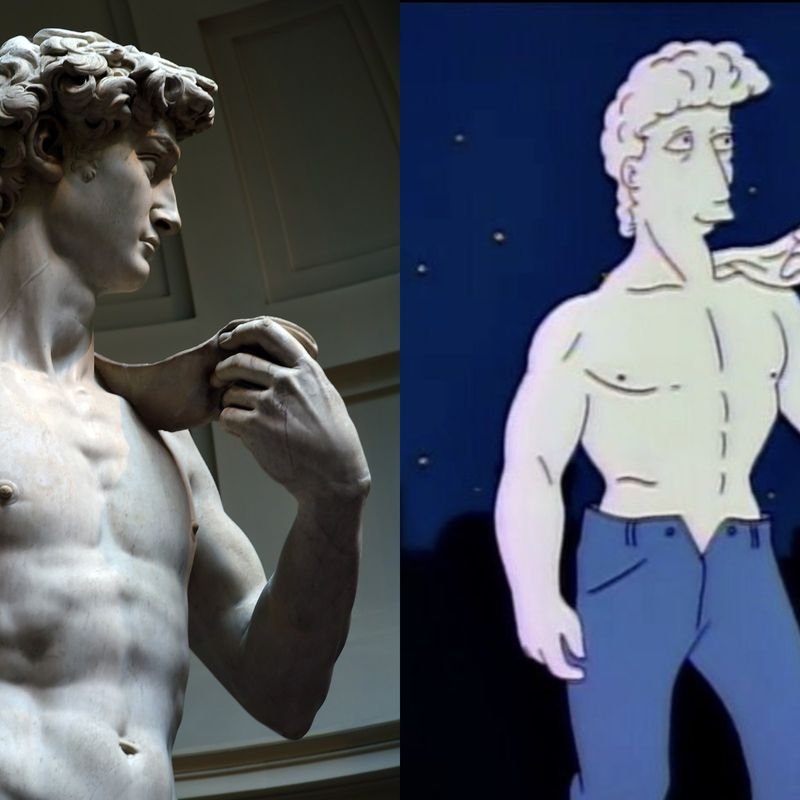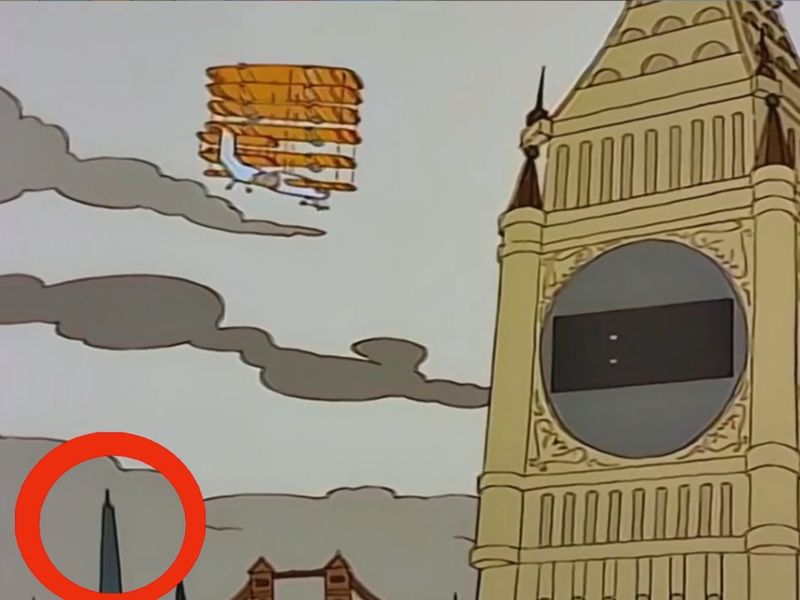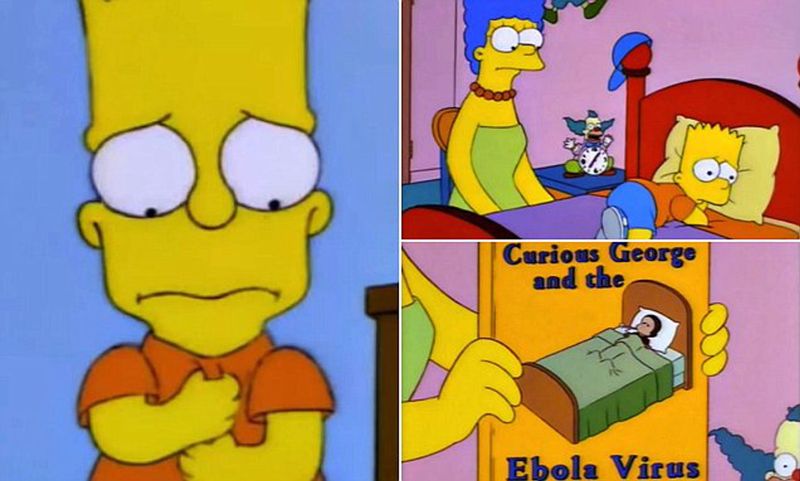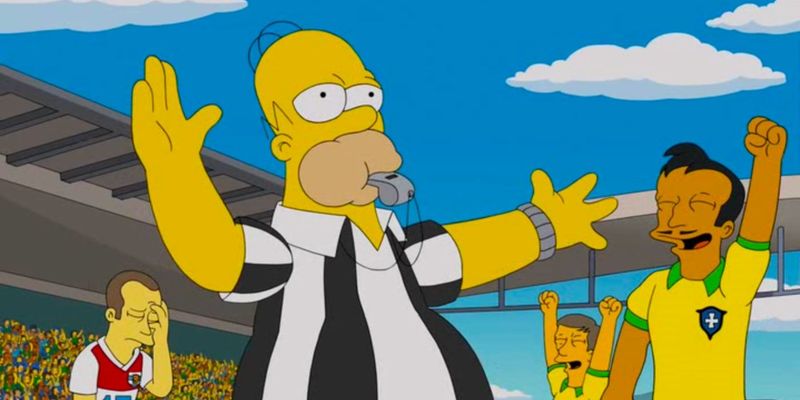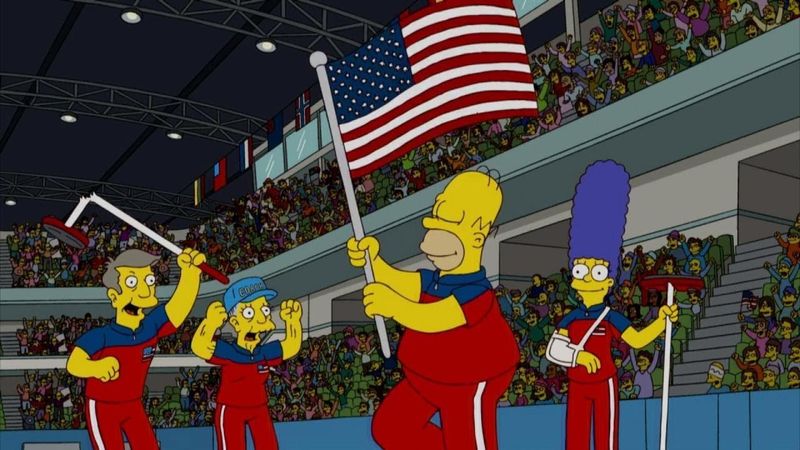Over its remarkable 35-season run, The Simpsons has become renowned for its uncanny knack of depicting events that later unfold in real life. While some of these instances are coincidental, others showcase the show’s insightful satire and cultural commentary.
Here are 12 times The Simpsons seemingly predicted the future:
1. Siegfried and Roy Tiger Attack
Season 5, Episode 10, titled “$pringfield (Or, How I Learned to Stop Worrying and Love Legalized Gambling)” aired in 1993, depicted magicians Gunter and Ernst attacked by their performing white tiger. This fictional event found a parallel in reality when in 2003, Roy Horn of the famed duo Siegfried and Roy was severely injured by a tiger during a live Las Vegas show.
The show’s satirical depiction became a chilling reality, highlighting the unpredictable nature of working with wild animals. This prediction resonated deeply, offering a grim reminder of the risks inherent in live animal performances.
2. Smartwatches
The episode “Lisa’s Wedding,” aired in 1995 as part of Season 6, presented a future where characters communicated through watches. This imaginative depiction foreshadowed the advent of smartwatches in the mid-2010s. Devices from companies like Apple and Samsung began offering features that resonated with the show’s vision, including voice commands and notifications.
The predictive nature of this episode underscores The Simpsons’ ability to envision technological advancements long before they materialized. This insight into future tech illustrates the show’s blend of creativity and foresight, making it a revered cultural touchstone for tech enthusiasts.
3. Donald Trump’s Presidency
In the episode titled “Bart to the Future” from Season 11, Episode 17, aired in 2000, The Simpsons offered a glimpse into a future where Lisa Simpson inherits a budgetary crisis from none other than President Trump. This episode, though satirical in nature, became eerily prophetic when Donald Trump was elected as the 45th President of the United States in 2016.
The show’s foresight was both humorous and unsettling for audiences as reality mirrored fiction. This prediction became a cultural talking point, showcasing The Simpsons’ knack for blending satire with uncanny accuracy.
4. Faulty Voting Machines
In “Treehouse of Horror XIX,” Season 20’s Episode 4 from 2008, Homer Simpson’s frustrating encounter with a malfunctioning voting machine humorously foresaw real-world technology problems in elections. Specifically, during the 2012 U.S. elections, reports surfaced about machines misregistering votes, raising concerns akin to the show’s portrayal.
This episode highlighted the potential vulnerabilities in electoral technology, sparking discussions on electoral integrity. The accuracy of this prediction illustrates The Simpsons’ distinctive satirical edge, using humor to comment on serious issues. Such episodes serve as cultural mirrors, reflecting societal concerns with insightful wit.
5. Nobel Prize Winner
In 2010, “Elementary School Musical,” the premiere episode of Season 22, featured an unexpected yet intriguing prediction. Milhouse van Houten, a character known for his nerdy persona, predicted Bengt R. Holmström as a Nobel Prize winner. Fast forward to 2016, Holmström indeed received the Nobel Prize in Economics.
This uncanny prediction amused audiences and showcased the show’s playful take on future events. The episode’s humorous foresight illustrates The Simpsons’ knack for blending whimsy with reality, providing audiences with entertaining yet thought-provoking content. It remains a testament to the show’s surprising predictive success.
6. Disney’s Acquisition of 20th Century Fox
In 1998, “When You Dish Upon a Star” aired as the fifth episode of Season 10, featuring a casual reference to Disney owning 20th Century Fox. The plot humor, often overlooked, took on new meaning when, in 2017, Disney announced an acquisition deal, sealing it by 2019.
Fans of The Simpsons were astounded by the show’s foresight. The merging of these entertainment giants marked a significant shift in the industry, aligning eerily with the animated prophecy. This instance showcases the show’s talent for making seemingly absurd predictions that end up reflecting reality.
7. Lady Gaga’s Super Bowl Performance
The Season 23 finale, “Lisa Goes Gaga,” aired in 2012, featured pop sensation Lady Gaga performing in Springfield, complete with an aerial stunt. This imaginative concert scene later mirrored reality when in 2017, Lady Gaga’s Super Bowl halftime show included her descent from the stadium roof.
The episode’s creative depiction of her performance style captured the essence of her real-life artistry. Fans of both Lady Gaga and The Simpsons found this prediction delightful, reinforcing the show’s reputation for cultural foresight. This instance exemplifies the playful yet accurate nature of the show’s predictions.
8. Censorship of Michelangelo’s David
In the 1990 episode “Itchy & Scratchy & Marge” from Season 2, Springfield’s residents humorously protested Michelangelo’s David, claiming obscenity. This art censorship satire later found a real-world echo when in 2016, Russian campaigners debated clothing a replica of the statue in St. Petersburg.
The show’s comedic take on art censorship resonated with actual events, highlighting ongoing debates about artistic freedom and public decency. The predictive power of this episode lies in its reflection on societal attitudes towards art and nudity, providing audiences with a humorous yet thought-provoking narrative on cultural values.
9. The Shard Building in London
“Lisa’s Wedding,” part of Season 6, aired in 1995, imagined a future London skyline prominently featuring a skyscraper akin to The Shard. This architectural prediction materialized when The Shard was completed in 2012, boasting a design strikingly similar to its animated counterpart.
The episode’s visionary depiction of urban development captured the imagination of audiences, showcasing the show’s ability to anticipate iconic landmarks. The Shard’s realization in real life affirmed The Simpsons’ reputation for uncanny predictions, blending humor with foresight. This episode remains a favorite among fans, highlighting the show’s architectural insights.
10. Ebola Outbreak
In “Lisa’s Sax,” a 1997 episode from Season 9, Marge casually mentions a book titled “Curious George and the Ebola Virus.” This seemingly innocuous reference gained haunting relevance during the significant Ebola outbreak in West Africa in 2014. The show’s ability to casually mention topics that later become prominent news underscores its unexpected predictive nature.
While Ebola outbreaks predated the episode, the timing of this reference proved prescient, capturing public attention. This episode exemplifies The Simpsons’ unique style of blending everyday humor with elements that later echo significant global events.
11. FIFA Corruption Scandal
In the 2014 episode “You Don’t Have to Live Like a Referee,” part of Season 25, Homer becomes a World Cup referee, encountering widespread corruption within FIFA. This storyline shockingly paralleled real-life events in 2015 when several FIFA officials were arrested on corruption charges.
The episode’s satirical portrayal of sports corruption resonated with actual scandals, highlighting the show’s knack for unveiling societal truths through humor. This prediction is a testament to The Simpsons’ ability to use comedy to address serious issues, reflecting the complexities of global sports governance with its characteristic wit.
12. U.S. Curling Team’s Olympic Gold
The 2010 episode “Boy Meets Curl” from Season 21 depicted Marge and Homer joining a curling team that goes on to win Olympic gold, defeating Sweden. This whimsical storyline surprisingly mirrored reality when in 2018, the U.S. men’s curling team achieved their first Olympic gold by beating Sweden.
The show’s playful take on curling captured the imagination of viewers, showcasing the allure of unexpected triumphs in sports. The alignment of this fictional victory with real-life events further solidified The Simpsons’ reputation for surprisingly accurate predictions, blending humor with aspirational narratives.
